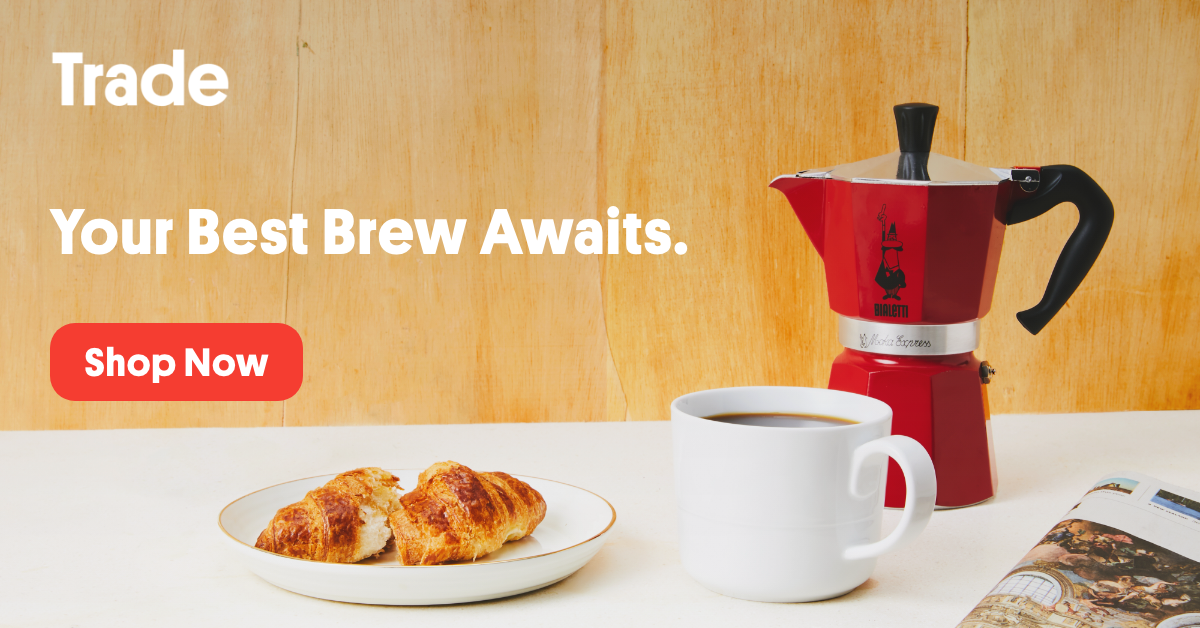Hello, coffee lover! We know brewing great coffee can seem really intimidating, and that the sheer number and complexity of brewing guides out there don’t help matters, so we’ve decided to help. Rather than think about coffee-brewing expertise as something you have to have right now, let’s look at it like a relay race: It’s much easier to run a marathon for the first time if you break it up into chunks.
Now that you’ve got what it takes to brew a fantastic cup from the basics, we’re going to turn on the heat and explore the effects that brew temperature have on your coffee-making process.
You’ve mastered your coffee-to-water ratio, you’ve gone on a grind-size journey, and you’ve watched the clock to make sure your brew time was spot-on. Now it’s time to go fahr out with Fahrenheit and excel with Celsius.
There’s one primary fact about brewing temperature that we should explore before getting into the exercise: Hotter water extracts faster.
To illustrate this concept, imagine sitting in front of two bowls of water: one room temperature and one just off the boil. Imaginary you is going to pour a teaspoon of cane sugar into each bowl and give it a quick stir. In which bowl do you think the sugar would dissolve first?
You’re right, of course: the one with hot water in it. Hot water dissolves better because it’s more molecularly active: As you heat water up, its molecules begin to move faster, which allows them to bump up against soluble materials and break them down more rapidly. When you heat water to boiling, you can see that agitation clearly as the water bubbles and roils. Meanwhile, cool to cold water is somewhat lazier, and doesn’t move around as much: That makes the extraction process considerably slower.
Think about cold brew coffee, for example: Because the water is room temperature, the coffee needs to steep for 12 to 24 hours, as opposed to the three to four minutes a pour over coffee takes to extract. Before you develop a need for speed, however, know that too much of a hot thing will burn: Brewing with actively boiling or near-boiling water (212°F) will most likely do more damage to your cup flavor-wise than actually create any advantage with regards to brew time. (In other words, cool your jets before going with the flow.)
The ideal brewing temperature for nearly all hot-brew preparations is between 195 to 205°F: A good rule of thumb is to start brewing when your water is closer to 205°F, because it’s unlikely the overall temperature will drop below 195°F in the time it takes to finish the job.
Of course, you don’t have to take our word for it: Let’s brew and taste the results! Just like with our last exercise, you’ll brew coffee three times, ideally using some kind of semi-manual device like a pour over, AeroPress, or French press. (Because automatic brewers have their own water-heating settings, you won’t be able to really manipulate the brewing temperature when you’re using one.) Tap or filtered water is A-OK, but stay away from distilled water.
Step-by-step instructions
- Get ready to brew a batch of coffee using the coffee-to-water ratio, grind size, and calibrated brew time that you’ve deduced from the first three exercises. Heat your water to 205°F either by setting the temperature on an electric kettle, using a thermometer on a stovetop kettle, or, if nothing else, bringing the water to a boil and counting out or timing 30 seconds before brewing. Brew the batch.
- Pour the finished brew into a carafe or mug and set aside to cool.
- While the first batch is cooling, brew again — this time using actively boiling water. If possible return the kettle to a heat source and bring it back up to boiling between brewing pulses.
- Repeat step two, and don’t worry: You will be able to tell the difference in extraction among the coffees better as they cool to be closer in temperature to one another, and we can always taste more nuance as the coffee comes down.
- Brew one last time, and instead of heating the water at all, simply use room temperature water in your kettle. Again, record the results.
- Taste!
As you’re tasting the coffees, remember that we’re looking for bitterness, sourness, and sweetness — which of the brews tastes the sweetest? Did the three batches look different as they were brewing? Do you notice any difference in the way they looked while you were brewing, or their color and appearance after you were finished? What do you think is the best temperature for your own brewing? How can you make sure you always achieve that temperature?
You are approaching pro-sumer status, my friend! (That’s an industry insider term for consumer-level professional — trust us, it’s a compliment.) One more lesson in this “semester” and you’ll have definitely earned a caffeine merit badge.
Good luck, have fun, and happy brewing!







